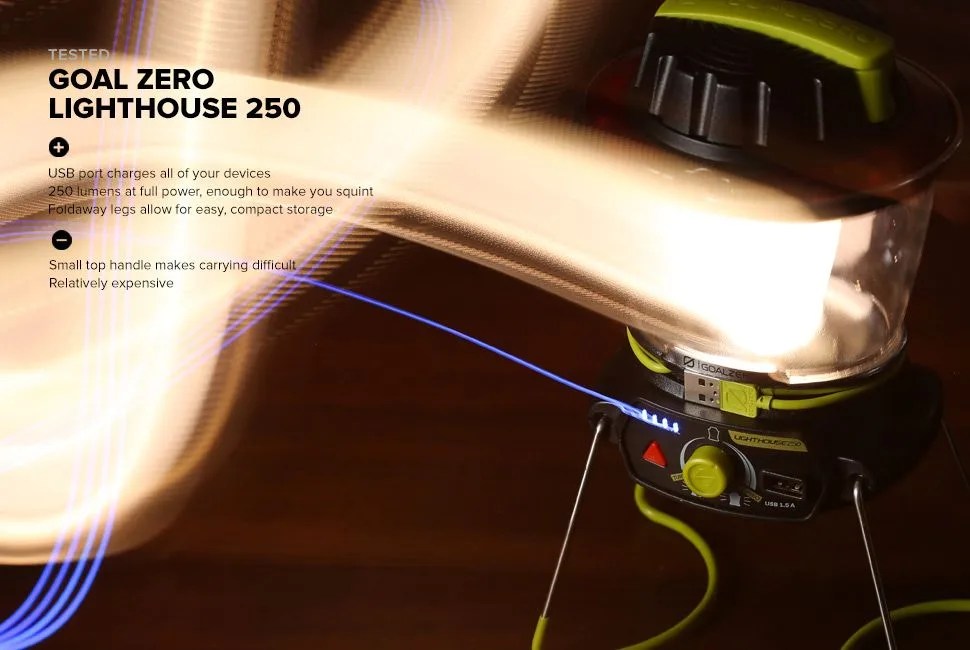In 2008, a year before founding Goal Zero, Robert Workman brought his first solar kit — what would become the Yeti 150 — to the Democratic Republic of the Congo. As part of his work with TIFIE Humanitarian (which he also founded), he was working to help community members rise above the poverty line. Cheap and available energy was an obvious first step.
MORE OUTDOOR TECH TESTING: Goal Zero Solar | SteriPEN Freedom Solar | BioLite Camp Stove
Since then, Goal Zero has grown quickly — it’s ranked as the ninth fastest growing company worldwide in 2013 by Inc. magazine — and its products have followed disasters wherever they’ve occurred: Haiti after the 2010 earthquake, Japan after the 2011 tsunami, the northeastern U.S. after Hurricane Sandy and southeast Asia after Typhoon Haiyan. Those in need received the company’s solar power packs and solar lights — the newest among them being the LightHouse 250 ($80) rechargeable lantern, a versatile light source suited for all regions of the globe.
The 1.1-pound LightHouse sits on two foldaway rubberized legs, spraying light in a full 360 degrees, or, if its knob is turned to directional lighting, only 180 degrees. Next to the adjustment knob, a triangle button lights up red flashing LEDs for emergency use (hopefully your lifeline never comes down to six blinking lights, but it’s better than nothing) and a battery indicator shows when the lantern needs its next charge.
At 250 lumens, the “turbo” intensity setting is enough to make you squint, but you’ll pay for it with only 2.5 hours of run time. Half-light on low intensity will shine for 48 hours — and then there’s always the option of recharging. A built-in cord, securely belted around the body, connects the lantern to any USB port. Out in the wild, with no power outlets, you can recharge using Goal Zero’s battery pack or connect to a solar panel directly. Assuming you bought only the lantern, spinning the top-mounted hand crank gives you last-ditch light, provided you want a little workout: one minute of cranking at a good pace gets you 10 minutes of low light.
Goal Zero advertises directional lighting for trail use, but the underwhelming top handle makes the lantern more suited for hanging from a tent hook than carrying down a trail. This role is reinforced by the lantern’s other function: it doubles as a power station, with a USB port for charging your devices. Providing enough power to recharge an iPhone twice or illuminate a hut for four nights, the lantern is clearly aimed at the weekend camper or those without reliable power infrastructure.
But that’s the whole idea. Power the lantern from a pristine wall outlet or from the sun. Use it to charge your iPhone or to illuminate a wood stove. Goal Zero makes products for both ends of the spectrum, meaning that as their company grows, so does their philanthropy. If you think $80 is pricey for a lantern, consider that you’ll be lighting your tent, charging your iPhone and helping the world. Most people can barely walk and text at the same time.
